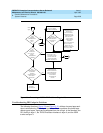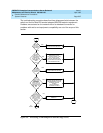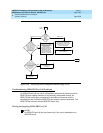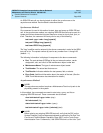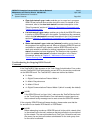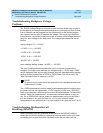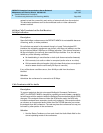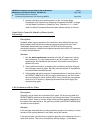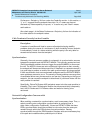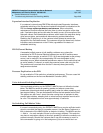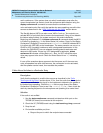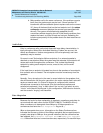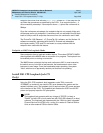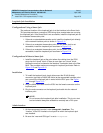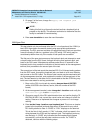
DEFINITY Enterprise Communications Server Release 5
Maintenance and Test for R5vs/si
555-230-123
Issue 1
April 1997
Routine Maintenance Procedures
Page 5-64Troubleshooting Multimedia Call Handling (MMCH)
5
2. Another indication of the audio modes is in the “Incoming Mode
Commands from Endpoint and Outgoing Commands from MMI” on page
3 of the Status Conference x Endpoint y form. Check the Audio fields
under the Mode Commands/Communication Modes section of the form.
Some Parties Cannot Be Heard by Others (Audio
Subsetting)
Description
Problems where varying subsets of the conference hear different things may
have problems with the various summing resources/groups that are in use.
Traditionally theses faults are caused by the SPE not cleaning up the
connections properly. Isolation and diagnosis should focus on the VC resources
in use by that conference.
Solution
1. Use the status conference command to list the VC resources in use by
this conference. Try a hot replacement of any VC boards in use, which
refreshes the VC translations and move all of the audio connections to
different VC ports.
2. If the problem still exists, try dropping the conference and then bringing
the conference back up again. Not only does this refresh VC translations,
but uses different timeslots as well.
3. If the problem still exists, suspect a hardware problem. If practical, wait for
the DEFINITY MMCH to be idle (no active conferences), and then check
the circuit packs for active (yellow) LEDs. If any of these are unexpected,
such as on a VC board, try replacing the board and then bringing the
conference up again.
Calls Terminate with No Video
Description
Generally, loss of video can be divided into 2 types. The first occurs when the
DEFINITY MMCH switches to the endpoint, but nobody sees them. The receivers
see either “black” video or a frozen image of the previous speaker depending on
the codec of the manufacturer. The type occurs when the DEFINITY MMCH does
not switch to an endpoint.
Solution
In the first type described above, wiring problems, power to the camera, or video
encoder circuit pack problems in the codec are typical causes.
In the second type, no video from an endpoint typically occurs because it is not a
valid video source. This can be checked by looking at page 1 of the Status



